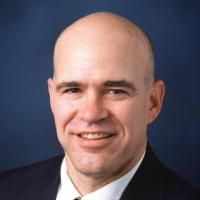Development and deployment of a field-portable soil O2 and CO2 gas analyzer and sampler.
Date
2019-01
Editors
Journal Title
Journal ISSN
Volume Title
Repository Usage Stats
views
downloads
Citation Stats
Abstract
Here we present novel method development and instruction in the construction and use of Field Portable Gas Analyzers study of belowground aerobic respiration dynamics of deep soil systems. Our Field-Portable Gas Analysis (FPGA) platform has been developed at the Calhoun Critical Zone Observatory (CCZO) for the measurement and monitoring of soil O2 and CO2 in a variety of ecosystems around the world. The FPGA platform presented here is cost-effective, lightweight, compact, and reliable for monitoring dynamic soil gasses in-situ in the field. The FPGA platform integrates off-the-shelf components for non-dispersive infrared (NDIR) CO2 measurement and electro-chemical O2 measurement via flow-through soil gas analyses. More than 2000 soil gas measurements have been made to date using these devices over 4 years of observations. Measurement accuracy of FPGAs is consistently high as validated via conventional bench-top gas chromatography. Further, time series representations of paired CO2 and O2 measurement under hardwood forests at the CCZO demonstrate the ability to observe and track seasonal and climatic patterns belowground with this FPGA platform. Lastly, the ability to analyze the apparent respiratory quotient, the ratio of apparent CO2 accumulation divided by apparent O2 consumption relative to the aboveground atmosphere, indicates a high degree of nuanced analyses are made possible with tools like FPGAs. In sum, the accuracy and reliability of the FPGA platform for soil gas monitoring allows for low-cost temporally extensive and spatially expansive field studies of deep soil respiration.
Type
Department
Description
Provenance
Citation
Permalink
Published Version (Please cite this version)
Publication Info
Brecheisen, Zachary S, Charles W Cook, Paul R Heine, Junmo Ryang and Daniel deB Richter (2019). Development and deployment of a field-portable soil O2 and CO2 gas analyzer and sampler. PloS one, 14(8). p. e0220176. 10.1371/journal.pone.0220176 Retrieved from https://hdl.handle.net/10161/21228.
This is constructed from limited available data and may be imprecise. To cite this article, please review & use the official citation provided by the journal.
Collections
Scholars@Duke

Daniel D. Richter
Richter’s research and teaching links soils with ecosystems and the wider environment, most recently Earth scientists’ Critical Zone. He focuses on how humanity is transforming Earth’s soils from natural to human-natural systems, specifically how land-uses alter soil processes and properties on time scales of decades, centuries, and millennia. Richter's book, Understanding Soil Change (Cambridge University Press), co-authored with his former PhD student Daniel Markewitz (Professor at University of Georgia), explores a legacy of soil change across the Southern Piedmont of North America, from the acidic soils of primary hardwood forests that covered the region until 1800, through the marked transformations affected by long-cultivated cotton, to contemporary soils of rapidly growing and intensively managed pine forests. Richter and colleagues work to expand the concept of soil as the full biogeochemical weathering system of the Earth’s crust, ie, the Earth’s belowground Critical Zone, which can be tens of meters deep. The research examines decadal to millennial changes in the chemistry and cycling of soil C, N, P, Ca, K, Mg, and trace elements B, Fe, Mn, Cu, Be, Zr, and Zn across full soil profiles as deep at 30-m. Since 1988, Richter has worked at and directed the Long-Term Calhoun Soil-Ecosystem Experiment (LTSE) in the Piedmont of South Carolina, a collaborative study with the USDA Forest Service that quantifies how soils form as natural bodies and are transformed by human action, and a study that has grown to become an international model for such long-term soil and ecosystem studies. In 2005, Richter and students initiated the first comprehensive international inventory project of the world’s LTSEs, using an advanced-format website that has networked metadata from 250 LTSEs. The LTSEs project has held three workshops at Duke University, NCSU's Center for Environmental Farming Systems, and the USDA Forest Service's Calhoun Experimental Forest and Coweeta Hydrologic Laboratory, hosting representatives from Africa, Asia, Australia, Europe, and the Americas. Richter's 60-year old Long Term Calhoun Soil and Ecosystem Experiment is linked to similar experiments and platforms around the world via the ‘Long-Term Soil-Ecosystem Experiments Global Inventory’, assembled by Dan Richter, Pete Smith, and Mike Hofmockel."He is an active member of the International Commission on Stratigraphy’s Working Group on the Anthropocene. Richter has written in the peer-reviewed literature about all of these projects, and in November 2014 his soils research at the Calhoun and his soils teaching were featured in Science magazine.
Unless otherwise indicated, scholarly articles published by Duke faculty members are made available here with a CC-BY-NC (Creative Commons Attribution Non-Commercial) license, as enabled by the Duke Open Access Policy. If you wish to use the materials in ways not already permitted under CC-BY-NC, please consult the copyright owner. Other materials are made available here through the author’s grant of a non-exclusive license to make their work openly accessible.
